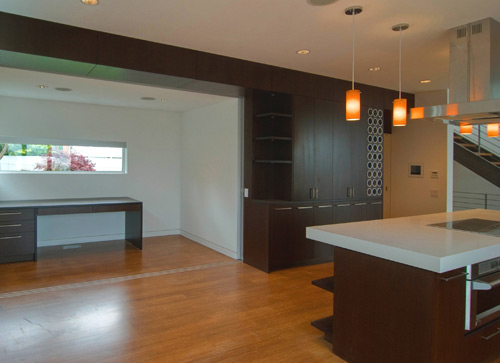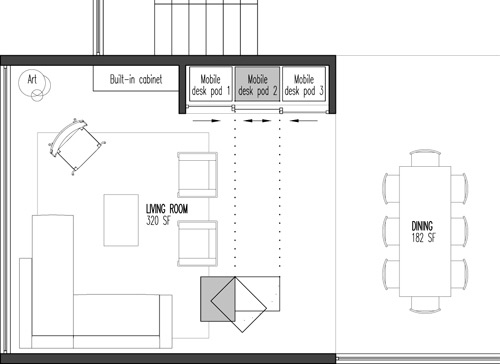
We’re seeing it more than ever. We’re seeing it with our clients, we’re seeing it with our friends and it’s even become an important part of our own lives. It’s the ability to not only work from home, but to have all the functions of the office and social media available to the living spaces of the home. Maybe it’s a connection to the office server, maybe it’s availability to all the various social medias, or maybe it’s simply the ability to access email. Regardless of the specifics, the overall objective is complete harmony with all of the digital tools available at the office. This isn’t just about home offices anymore. Home offices are typically too static, they take up too much square footage in the modern home and they’re not flexible enough. People want the ability to work at the kitchen counter, email from the living room sofa, crank out some graphic design at the dining room table, etc.
It’s pretty dang exciting for us architects to wrap our minds around this paradigm shift. The home is functioning differently and, most importantly, people have the ability for more possibility in their daily lives. It’s also new design territory and translating new technologies/adaptable lifestyles into physical form is something we enjoy crunching on. Today’s post covers 3 case studies for live+work harmony in the home. Each case study is based on a past or current project and we’re kicking the tires on these ideas as we speak. Let us know your thoughts and if you’ve seen some good examples out there.
1. OFFICE CUBBY; it takes the idea of the traditional office and cuts the square footage in half. With the smaller footprint, the office cubby can now be an appendage to any room in the house (in this case the kitchen). Full height Raumplus glass doors disappear into wall pockets so that the office cubby can entirely open up to the rest of the house when desired.


2. OFFICE PODS; this example takes up a mere 60 square feet (about the size of a small bathroom). It accommodates his and her desk stations with a common bank of cabinets for the printer, shared supplies, etc. Sliding doors are opened when the pods are in use; when guests arrive, the doors are slid shut to conceal the mess. The tidy footprint of the office pods allows them to be located just about anywhere in the house, even off the hallway as in this example. The pods also provide a good “home base” for laptops and other equipment that may wander around the house like satellites.


[Similar doors in a different application]
3. MOBILE DESK PODS; the desk pods are essentially nice cabinet boxes on wheels. They contain working space for laptops, desktops, and all the devices that go with them. The pods roll around the house and plug into strategically located ports for complete connection or communicate with a wireless internet connection back at the wall station. When you’re done working, internetting or untagging yourself from Facebook photos the mobile pods can be rolled back into the station and concealed by sliding doors.

There’s a great deal of evolution still to emerge on this design front; we think it will be driven by technology and the homeowner’s desire for more flexibility and connection in their homes. Necessity is the mother of invention and it’s now in the architect’s court to design good solutions for progressive living and working. We’re looking forward to more iterations on this theme…





